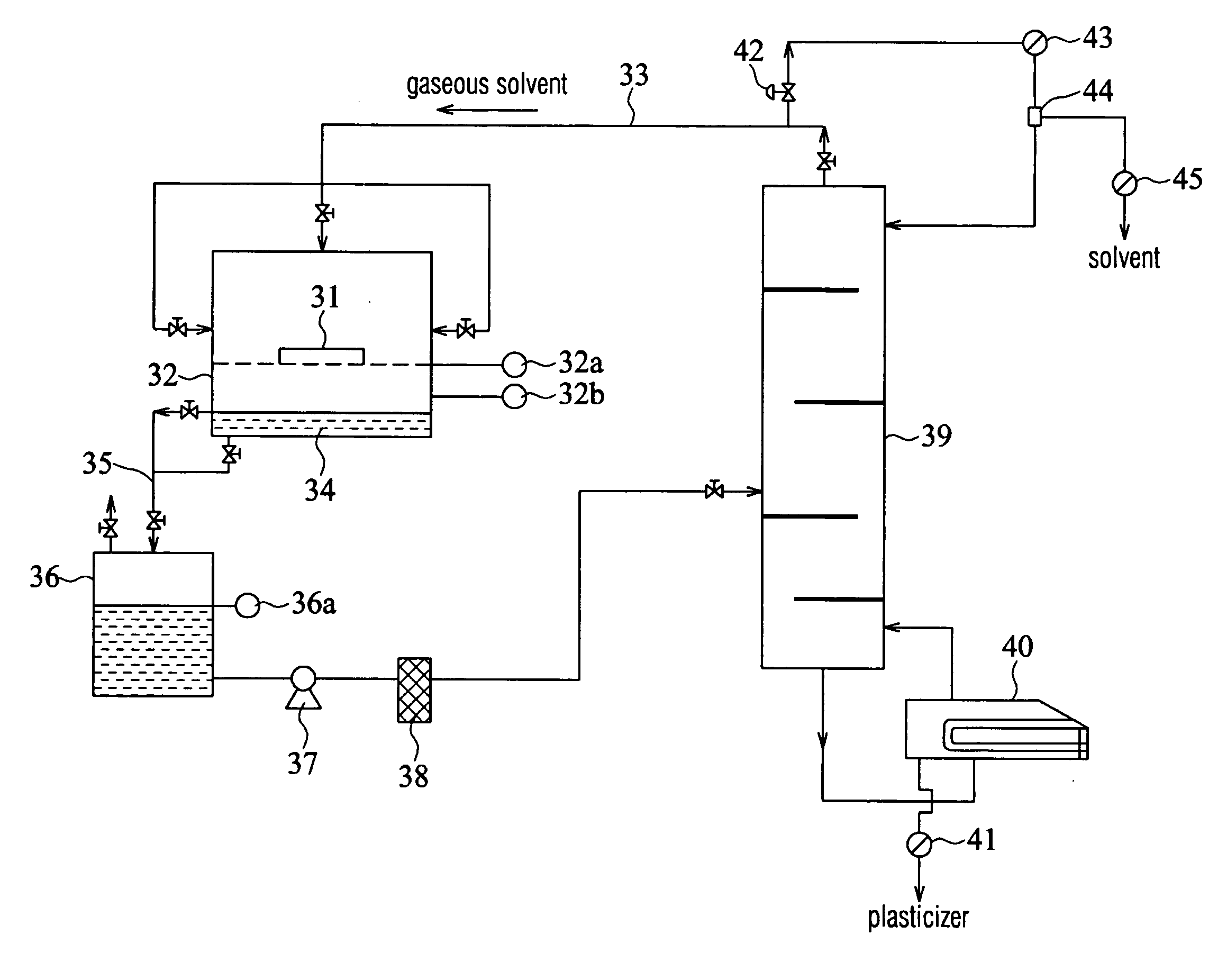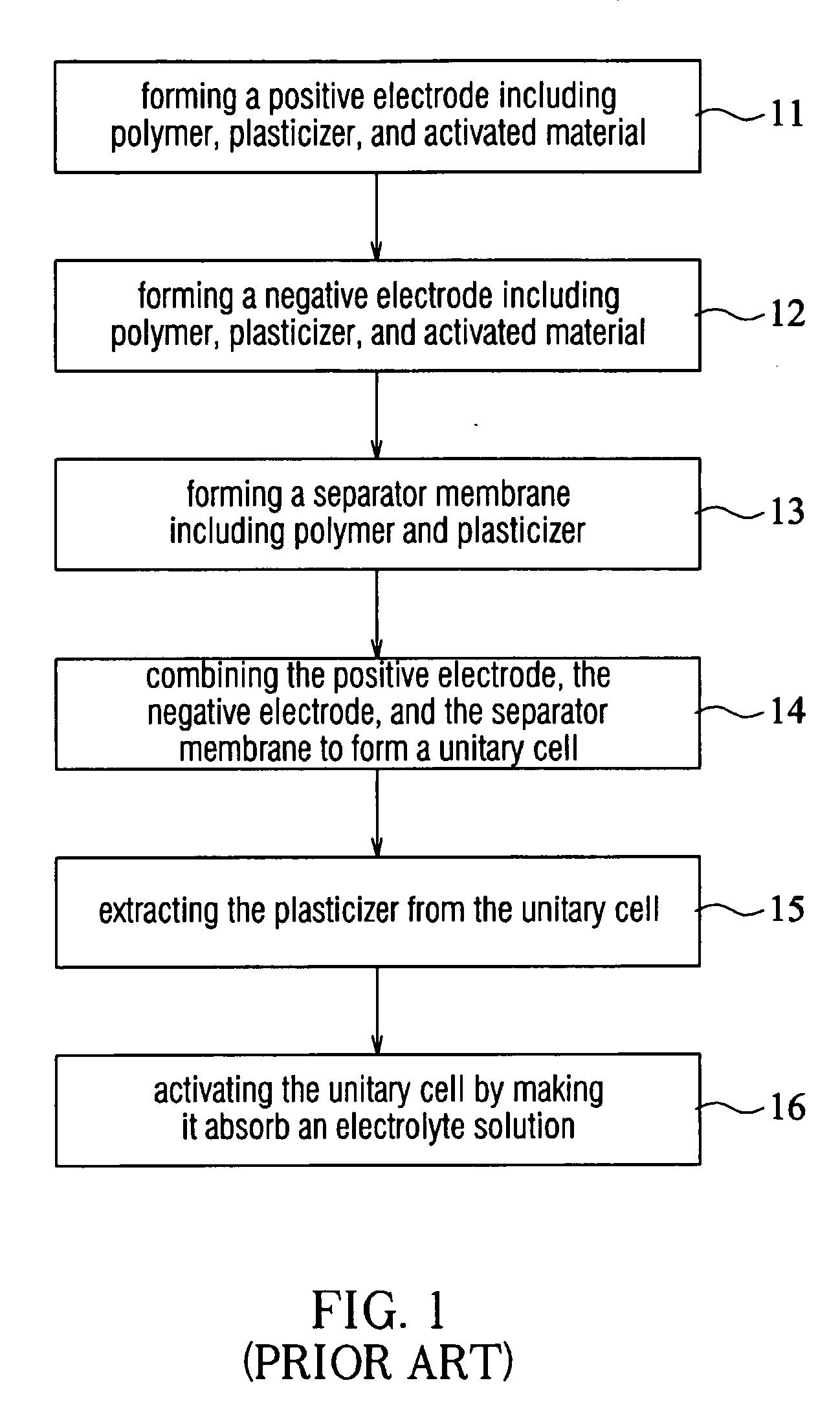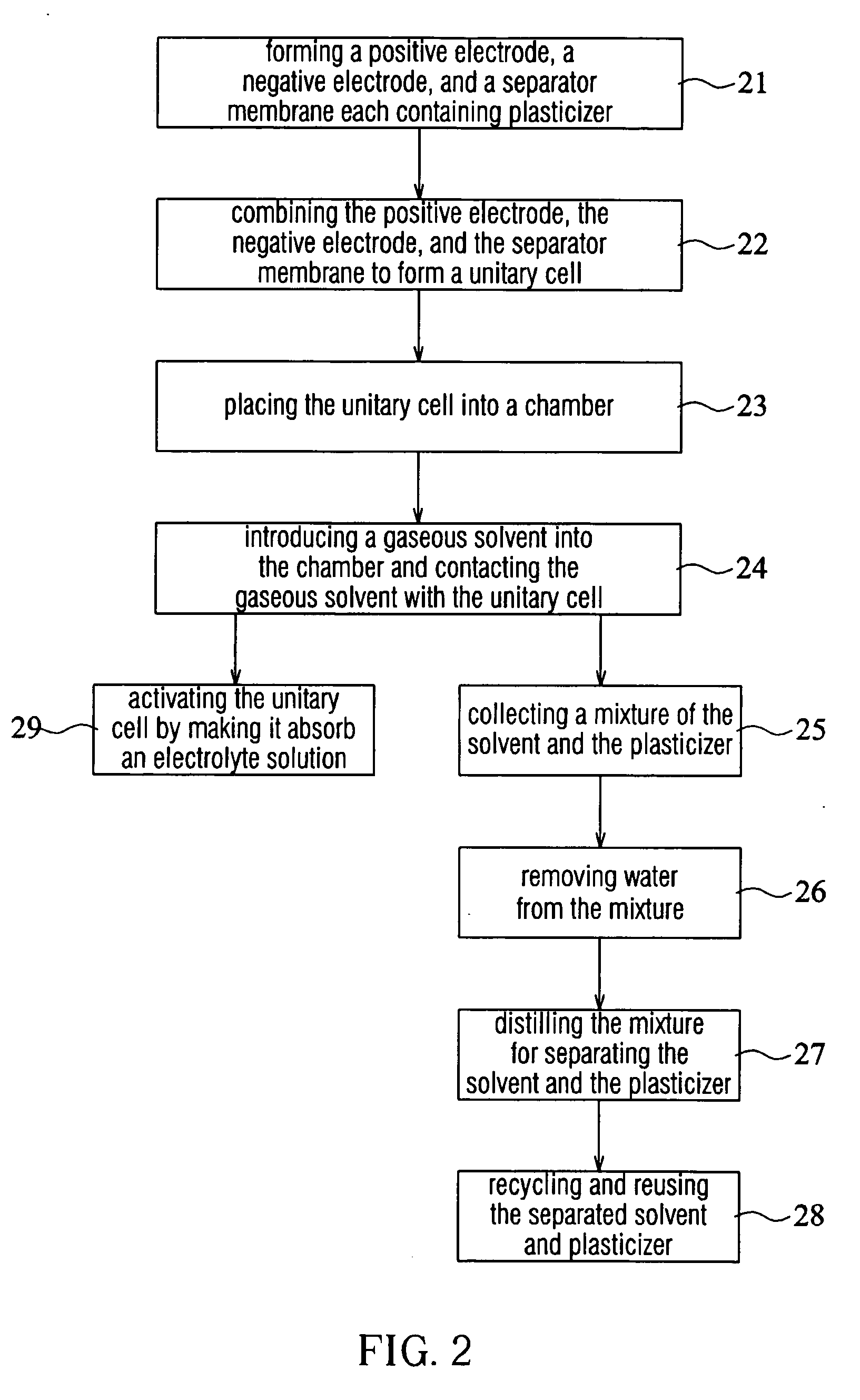Method for removing plasticizer during manufacturing process of polymeric secondary battery and method for manufacturing polymeric secondary battery
a secondary battery and plasticizer technology, applied in the manufacture of secondary cells, cell components, final product manufacturing, etc., can solve the problems of reducing extraction efficiency, complex extraction process, and poor conductivity of traditional solid-state polymers, so as to improve extraction efficiency, shorten process time, and reduce production cost
- Summary
- Abstract
- Description
- Claims
- Application Information
AI Technical Summary
Benefits of technology
Problems solved by technology
Method used
Image
Examples
example
[0021] The aforementioned method and the characteristics of the secondary battery formed using the method is demonstrated by the following example.
[0022] The positive electrode is made of active material, conductivity enhancer, polymer material, and plasticizer at a ratio of 75:5:7:13 (by weight) respectively; wherein the active material is LiCoO2, the conductivity enhancer is conductive carbon blacks, the polymer material is polyvinylidene fluoride (PVDF), and the plasticizer is DBP.
[0023] The negative electrode is made of active material, conductivity enhancer, polymeric material, and plasticizer at a ratio of 69:3:9:19 (by weight) respectively; wherein the active material is mesocarbon microbeads (MCMB), the conductivity enhancer is conductive carbon blacks, the polymer material is PVDF, and the plasticizer is DBP.
[0024] The separator membrane is made of polymer material (PVDF), plasticizer (DBP), and silicon dioxide at a ratio of 25:55:20 (by weight) respectively.
[0025] Form...
PUM
| Property | Measurement | Unit |
|---|---|---|
| Temperature | aaaaa | aaaaa |
| Water content | aaaaa | aaaaa |
| Time | aaaaa | aaaaa |
Abstract
Description
Claims
Application Information
 Login to View More
Login to View More - R&D
- Intellectual Property
- Life Sciences
- Materials
- Tech Scout
- Unparalleled Data Quality
- Higher Quality Content
- 60% Fewer Hallucinations
Browse by: Latest US Patents, China's latest patents, Technical Efficacy Thesaurus, Application Domain, Technology Topic, Popular Technical Reports.
© 2025 PatSnap. All rights reserved.Legal|Privacy policy|Modern Slavery Act Transparency Statement|Sitemap|About US| Contact US: help@patsnap.com



